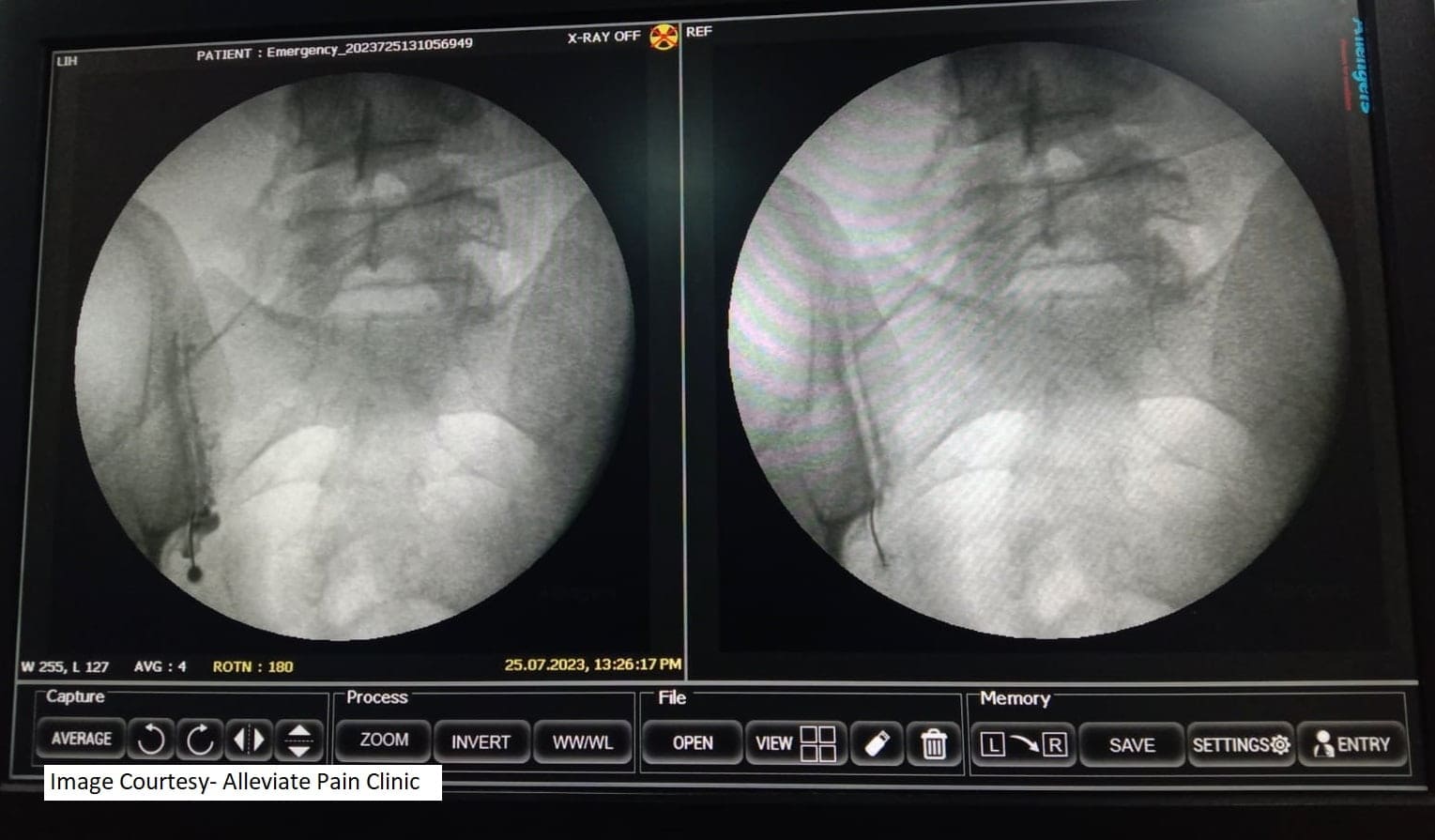Introduction
Welcome back to the second part of our blog series on non-surgical treatments for back pain Today, we’ll delve deeper into one specific procedure: the Image-guided Sacroiliac Joint Injection Under Fluoroscopy.
Indications for Sacroiliac Joint Injection
The sacroiliac joint (SI joint) is a crucial connection point between the sacrum (the triangular bone at the base of your spine) and the ilium (the uppermost bone of your pelvis). When this joint becomes inflamed or irritated, it can lead to intense lower back pain. Sacroiliac joint pain can be caused by various factors, including injury, pregnancy, or simply wear and tear over time.

The sacroiliac joints sit between the sacrum and the iliac bones in the lower back where the spine meets the pelvis. Alterations in function of the sacroiliac joints are a common cause of lower back pain.
Indications for an image-guided sacroiliac joint injection typically include:
- Chronic Lower Back Pain : When lower back pain persists for an extended period, especially if it’s localized to one side of the lower back, it might be due to sacroiliac joint dysfunction.
- Pain Following Pregnancy : As in Prerna’s case, some women experience SI joint pain post-pregnancy due to the hormonal changes and increased stress on the pelvis during childbirth.
- Failed Conservative Treatments : If traditional treatments like physical therapy, pain medications, and lifestyle changes haven’t provided relief, an SI joint injection may be considered.
Technique of Procedure
Preparation
Before the procedure, the patient is usually positioned lying face down on an X-ray table. The skin overlying the SI joint area is cleaned and sterilized, and the patient’s vital signs are monitored throughout the procedure.
Fluoroscopy Guidance
Fluoroscopy is a real-time X-ray technique that allows the physician to visualize the SI joint and surrounding structures with precision. This helps guide the needle placement accurately.

Injection
A local anesthetic is administered to numb the skin and underlying tissue. Then, a thin, specialized needle is inserted into the SI joint, and contrast dye is injected to confirm the needle’s position. Once the correct placement is confirmed, a mixture of a corticosteroid and anesthetic is injected into the joint to reduce inflammation and alleviate pain.
Post-Procedure
Patients are monitored for a brief period after the procedure. It’s not uncommon to experience some temporary numbness or weakness in the leg on the side of the injection. This usually resolves within a few hours.
Success Story at Alleviate Pain Clinic: Prerna’s Journey
Meet Prerna, a 38-year-old homemaker from Bengaluru, India. After giving birth to her child, she started experiencing excruciating lower back pain, primarily on her right side. She tried various maneuvers and over-the-counter pain relievers but found no lasting relief. Her chronic pain was affecting her ability to care for her child and perform daily tasks.
Desperate for relief, Prerna visited Alleviate Pain Clinic in Bengaluru, where she met with a pain management specialist. After a thorough evaluation, it was determined that her lower back pain was caused by sacroiliac joint dysfunction.
Under the expert guidance of the clinic’s medical team, Prerna underwent an image-guided sacroiliac joint injection under fluoroscopy. The procedure went smoothly, and Prerna experienced immediate relief from her lower back pain.

Fluoroscopic guided Sacroiliac joint injection. Needle position confirmed by dye spread.However, the clinic’s approach didn’t stop at the injection. Prerna was also provided with a structured physiotherapy program to strengthen her core muscles and improve her overall spinal stability. This holistic approach addressed the root cause of her pain and provided her with the tools to maintain her improved quality of life.
Today, Prerna is pain-free and enjoying her time with her child without any limitations. Her success story is a testament to the effectiveness of non-surgical interventions like image-guided sacroiliac joint injections in alleviating chronic back pain and improving the overall well-being of patients.
In our next blog post, we’ll explore more non-surgical options for back pain management, so stay tuned for more insights and success stories from the world of pain management without surgery.





